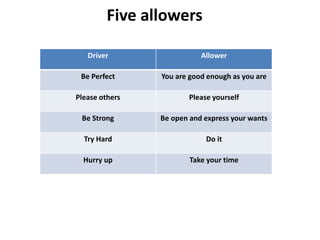Sleep therapy
Sleep Therapy
Understand Sleep Therapy fundamentals, the difference between REM and NREM, and use 20 practical techniques to fall asleep easily.
| Pos. | Name | Score | Duration | Points |
|---|---|---|---|---|
| 1 | HARISH KUMAR C V | 98 % | 14 minutes 40 seconds | 59 / 60 |
| 2 | Kavitha R | 97 % | 21 minutes 32 seconds | 58 / 60 |
| 3 | C SATHYA | 97 % | 1 hours 15 minutes 44 seconds | 58 / 60 |
| 4 | C MUTHULAKSHMI | 93 % | 50 minutes 42 seconds | 56 / 60 |
| 5 | R.GAYATHRI | 88 % | 1 hours 2 minutes 38 seconds | 53 / 60 |
| 6 | B. Dinesh | 88 % | 1 hours 49 minutes 41 seconds | 53 / 60 |
| 7 | SIJISHA SACHEENDRAN | 85 % | 22 minutes 6 seconds | 51 / 60 |
| 8 | R.Shoba | 85 % | 39 minutes 7 seconds | 51 / 60 |
| 9 | SUGANYA V | 85 % | 52 minutes 43 seconds | 51 / 60 |
| 10 | R.Jeyanthi | 80 % | 37 minutes 43 seconds | 48 / 60 |
| 11 | A.JANE | 73 % | 16 minutes 15 seconds | 44 / 60 |
| 12 | Garikai Rwodzi | 57 % | 46 minutes 29 seconds | 34 / 60 |
| 13 | Sunita Arjun Ambule | 55 % | 26 minutes 39 seconds | 33 / 60 |
| 14 | Battula salini | 55 % | 52 minutes 28 seconds | 33 / 60 |
| 15 | JARINA BEGAM A.G | 50 % | 1 hours 19 minutes 14 seconds | 30 / 60 |
| 16 | Sunita Arjun Ambule | 45 % | 40 minutes 42 seconds | 27 / 60 |
| 17 | Sunita Arjun Ambule | 43 % | 1 hours 35 minutes 53 seconds | 26 / 60 |
| 18 | Rajani | 35 % | 8 minutes 55 seconds | 21 / 60 |
| 19 | Demo check | 20 % | 1 minutes 58 seconds | 12 / 60 |
| 20 | Guest | 0 % | 0 second | 0 / 0 |
| 21 | Guest | 0 % | 0 second | 0 / 0 |
| 22 | Guest | 0 % | 0 second | 0 / 0 |
| 23 | Guest | 0 % | 0 second | 0 / 0 |
| 24 | Guest | 0 % | 0 second | 0 / 0 |
| 25 | Guest | 0 % | 0 second | 0 / 0 |
| 26 | Guest | 0 % | 0 second | 0 / 0 |
| 27 | Guest | 0 % | 0 second | 0 / 0 |
| 28 | Guest | 0 % | 0 second | 0 / 0 |
| 29 | Guest | 0 % | 0 second | 0 / 0 |
- CBT-I aligned Mind–Body Holistic
- Guided by Mentor: Seethalakshmi Sivakumar
What is Sleep Therapy?
Sleep Therapy is a structured set of psychological, behavioral, and holistic strategies that help you fall asleep faster, reduce awakenings, and improve sleep quality. It commonly includes CBT-I (cognitive behavioral therapy for insomnia), sleep hygiene, relaxation (breathwork, progressive muscle relaxation, guided imagery), and selected mind–body practices (Yoga Nidra, mindfulness, energy balancing).
- Assessment: sleep history, diary, ISI score, screening for apnea/restless legs.
- Behavioral: stimulus control, sleep restriction, circadian alignment.
- Cognitive: reduce worry, reframe beliefs, paradoxical intention.
- Somatic: breathwork, PMR, body scanning, thermal regulation.
- Holistic: mindfulness, Yoga Nidra, Reiki, energy sweeping before bed.
What is REM and NREM?
NREM Sleep (3 stages: N1, N2, N3)
- N1: light transitional sleep.
- N2: deeper; sleep spindles & K-complexes.
- N3: deep slow-wave sleep for body restoration.
REM Sleep
- Dreaming phase; emotional and memory processing.
- Brain active but body relaxed (REM atonia).
- Supports creativity and emotional health.
| Feature | NREM | REM |
|---|---|---|
| Stages | N1, N2, N3 | Single REM stage |
| Main Role | Body repair & restoration | Emotion & memory processing |
| Awakening difficulty | Hardest in N3 | Moderate |
| Dream intensity | Lower | Higher |
20 Techniques to Sleep Easily
- Stimulus Control
- Sleep Restriction
- Consistent Schedule
- Wind-Down Routine
- Light Management
- Digital Sunset
- Breathwork 4-7-8
- Progressive Muscle Relaxation
- Guided Imagery
- Mindfulness/Body Scan
- Paradoxical Intention
- Worry-Time Journaling
- Thermal Regulation
- Aromatherapy
- Sound Therapy
- Yoga Nidra
- Evening Nutrition
- Regular Exercise
- Energy Sweeping
- Professional Support
Need Personal Help?
Mentor Profile

Please find the Mentor profile below:
https://emocare.co.in/seethalakshmi-sivakumar-portfolio-expertise/
Psychologist • Counsellor • Life Coach | Emocare, Chennai & Online Worldwide
Reality Therapy – Principles, Techniques & Interactive Quiz
Test Yourself First
Quick pre-learning check. Your score will show instantly.
Reality Therapy: 5 Principles, 5 Steps, 5 Techniques
Choice-focused counselling that moves clients from excuses to effective action.
5 Principles of Reality Therapy
- Choice & Responsibility: Clients choose behaviours; change begins when they own those choices and consequences.
- Present-Focused & Reality-Based: Work with what the client is doing now and what is realistically controllable.
- Needs-Satisfaction: All behaviour attempts to meet basic needs (love & belonging, power/achievement, freedom, fun, survival).
- Behaviour over Symptoms: Rather than analysing symptoms, target specific, observable actions that can change.
- No Excuses, No Punishment—Accountability: Empathic, firm coaching that rejects blaming and builds workable plans.
5 Steps in Reality Therapy (WDEP + Follow-Up)
Use these in order within sessions and across treatment.
- W — Wants: Clarify what the client wants in relationships, work, health (their “quality world”).
- D — Doing: Map what they are doing right now—actions, thoughts, feelings, physiology.
- E — Evaluation: Ask, “Is what you’re doing helping you get what you want?” Invite honest self-evaluation.
- P — Planning: Co-create a small, specific plan that is doable this week (see SAMI2C3 below).
- Commitment & Follow-Up: Gain a clear commitment; review results next session and adjust the plan.
5 Techniques in Reality Therapy
- WDEP Questioning: Structured questions to elicit Wants, current Doing, self-Evaluation, and concrete Planning.
- Self-Evaluation Prompts: Repeated, gentle questions (“How is this helping?”) to build insight without shaming.
- Behavioural Contracts: Short, written agreements specifying the exact behaviour, timeline, and review date.
- Role-Play & Rehearsal: Practice key conversations or boundary-setting before trying them in real life.
- SAMI2C3 Planning: Plans are Simple, Attainable, Measurable, Immediate, Involved (client-driven), Controlled by the client, Committed, Consistent.

Understanding Drivers in Transactional Analysis
Introduction
Transactional Analysis (TA) is a psychological theory that helps individuals understand their behavior and the dynamics of their relationships. One important concept in TA is the notion of drivers, which are unconscious patterns of behavior that drive our actions and decisions. In this article, we will explore the different types of drivers and their characteristics, as well as how to identify them through behavioral clues. Click the below link to assess your Driver behaviour.
https://emocare.co.in/understanding-transactional-analysis-and-its-impact-on-our-behavior/
Types of Drivers
1. Be Perfect Driver
The Be Perfect driver is characterized by a strong need for perfectionism. Individuals with this driver often set high standards for themselves and others, and they constantly strive to meet these expectations. They fear making mistakes and often experience anxiety when things are not perfect. They may also have a critical inner voice that constantly judges their performance.
2. Hurry Up Driver
The Hurry Up driver is characterized by a constant sense of urgency and impatience. Individuals with this driver often feel the need to rush through tasks and may become easily frustrated when things don’t move quickly enough. They may also have difficulty relaxing and enjoying the present moment, as they are always focused on what needs to be done next.
3. Try Hard Driver
The Try Hard driver is characterized by a strong need for approval and validation from others. Individuals with this driver often go above and beyond to please others and may neglect their own needs in the process. They may have a fear of rejection and may struggle with setting boundaries. They may also have a tendency to take on more responsibilities than they can handle.
4. Be Strong Driver
The Be Strong driver is characterized by a reluctance to show vulnerability or ask for help. Individuals with this driver often feel the need to appear strong and independent, even when they are struggling. They may have difficulty expressing their emotions and may suppress their needs in order to maintain a sense of control.
5. Please Me Driver
The Please Me driver is characterized by a strong need for attention and validation from others. Individuals with this driver often seek approval and affirmation from others and may go to great lengths to please them. They may have difficulty asserting themselves and may fear rejection or disapproval. They may also have a tendency to put others’ needs before their own.
Behavioral Clues to Identify Drivers
Identifying drivers can be challenging, as they are often unconscious patterns of behavior. However, there are some behavioral clues that can help us recognize when a driver is at play:
- Repeated patterns of behavior: If you notice that you consistently react in a certain way in different situations, it could be a sign of a driver.
- Emotional reactions: Drivers often trigger strong emotional reactions, such as anxiety, frustration, or a need for validation.
- Automatic responses: Drivers often lead to automatic, reflex-like responses without much conscious thought.
- Physical cues: Pay attention to any physical sensations or tension in your body when you are engaging in certain behaviors.
Allowers in Drivers

The therapist guides the client with Allowers after understanding his drivers.
While drivers can be limiting and may lead to unhealthy patterns of behavior, it’s important to note that they also have positive aspects. These positive aspects, known as “allowers,” can help individuals navigate certain situations effectively. For example:
- The Be Perfect driver can lead to high standards and attention to detail, which can be beneficial in certain professions.
- The Hurry Up driver can result in efficiency and productivity, especially in time-sensitive situations.
- The Try Hard driver can foster empathy and a strong work ethic, which can be valuable in helping others.
- The Be Strong driver can cultivate resilience and independence, which can be advantageous in challenging circumstances.
- The Please Me driver can promote harmony and cooperation, which can contribute to positive relationships.
Conclusion
Understanding drivers in Transactional Analysis can provide valuable insights into our behavior and the underlying motivations that drive us. By recognizing our drivers, we can gain greater self-awareness and make conscious choices that align with our values and goals. Remember, drivers are not inherently good or bad, but how we choose to engage with them can greatly impact our well-being and relationships.
Learn More
Understanding Depression: Symptoms, Differences, and Treatment Options
Introduction
Depression is a common mental health disorder that affects millions of people worldwide. It is important to understand the symptoms, differences from sadness or grief, and the various ways it can manifest in different age groups and genders. This article will explore the assessment and treatment options available for depression.
Symptoms of Depression
Depression is characterized by persistent feelings of sadness, hopelessness, and a loss of interest or pleasure in activities. Other common symptoms include:
- Changes in appetite and weight
- Sleep disturbances
- Difficulty concentrating or making decisions
- Fatigue or loss of energy
- Feelings of worthlessness or excessive guilt
- Recurrent thoughts of death or suicide
Depression vs. Sadness or Grief/Bereavement
While it is normal to experience sadness or grief after a loss or disappointment, depression is different. Sadness and grief are temporary and typically improve over time, whereas depression is a persistent condition that requires professional intervention. If symptoms persist for more than two weeks and interfere with daily functioning, it may be a sign of depression.
Depression Symptoms in Children and Teens
Depression can affect individuals of all ages, including children and teenagers. In younger individuals, symptoms may manifest differently and can include:
- Irritability or anger
- Withdrawal from friends and family
- Changes in appetite and sleep patterns
- Difficulty concentrating or performing well in school
- Physical complaints such as headaches or stomachaches
If you suspect your child or teenager may be experiencing depression, it is important to seek professional help.
Depression Symptoms in Older Adults
Depression in older adults is often overlooked or misdiagnosed. Symptoms may be attributed to other health conditions or dismissed as a normal part of aging. Common symptoms in older adults include:
- Memory problems
- Unexplained physical ailments
- Withdrawal from social activities
- Feelings of hopelessness or worthlessness
- Increased use of alcohol or medication
It is crucial for healthcare providers and caregivers to be vigilant in identifying depression in older adults and ensuring they receive appropriate support.
Depression Symptoms in Women
Depression affects women at a higher rate than men. Hormonal changes during puberty, pregnancy, and menopause can contribute to the development of depression. Common symptoms in women include:
- Increased irritability or mood swings
- Feelings of guilt or worthlessness
- Changes in appetite and sleep patterns
- Loss of interest in activities
- Thoughts of self-harm or suicide
It is important for women to seek support and treatment if they experience these symptoms.
Depression Symptoms in Men
Depression in men is often underreported and can be masked by anger or irritability. Men may be less likely to seek help due to societal expectations of masculinity. Common symptoms in men include:
- Increased anger or aggression
- Loss of interest in work or hobbies
- Physical symptoms such as headaches or digestive problems
- Substance abuse
- Thoughts of self-harm or suicide
It is crucial to encourage men to seek help and provide them with a safe space to discuss their emotions.
Assessment of Depression
Assessing depression involves a comprehensive evaluation by a healthcare professional. This may include a physical examination, psychological assessments, and interviews to determine the severity and impact of symptoms. It is important to be honest and open during the assessment process to ensure an accurate diagnosis.
Treatment for Depression
Treatment for depression can vary depending on the individual and the severity of symptoms. Common treatment options include:
- Psychotherapy: Talk therapy with a trained therapist can help individuals explore their thoughts and emotions, develop coping strategies, and improve their overall well-being.
- Medication: Antidepressant medications may be prescribed to help regulate brain chemistry and alleviate symptoms. It is important to work closely with a healthcare provider to find the right medication and dosage.
- Lifestyle changes: Engaging in regular exercise, maintaining a healthy diet, getting enough sleep, and reducing stress can all have a positive impact on depression symptoms.
Therapies for Depression
In addition to traditional treatment options, there are alternative therapies that can complement and enhance the treatment of depression. These include:
- Mindfulness and meditation: Practicing mindfulness and meditation techniques can help individuals manage stress, improve self-awareness, and promote emotional well-being.
- Art therapy: Engaging in creative activities such as painting or drawing can provide an outlet for self-expression and emotional healing.
- Exercise therapy: Physical activity has been shown to release endorphins, improve mood, and reduce symptoms of depression.
Conclusion
Depression is a complex mental health disorder that can affect individuals of all ages and genders. Recognizing the symptoms and seeking appropriate treatment is crucial for managing and overcoming depression. With the right support and interventions, individuals can lead fulfilling and meaningful lives.
Learn More
